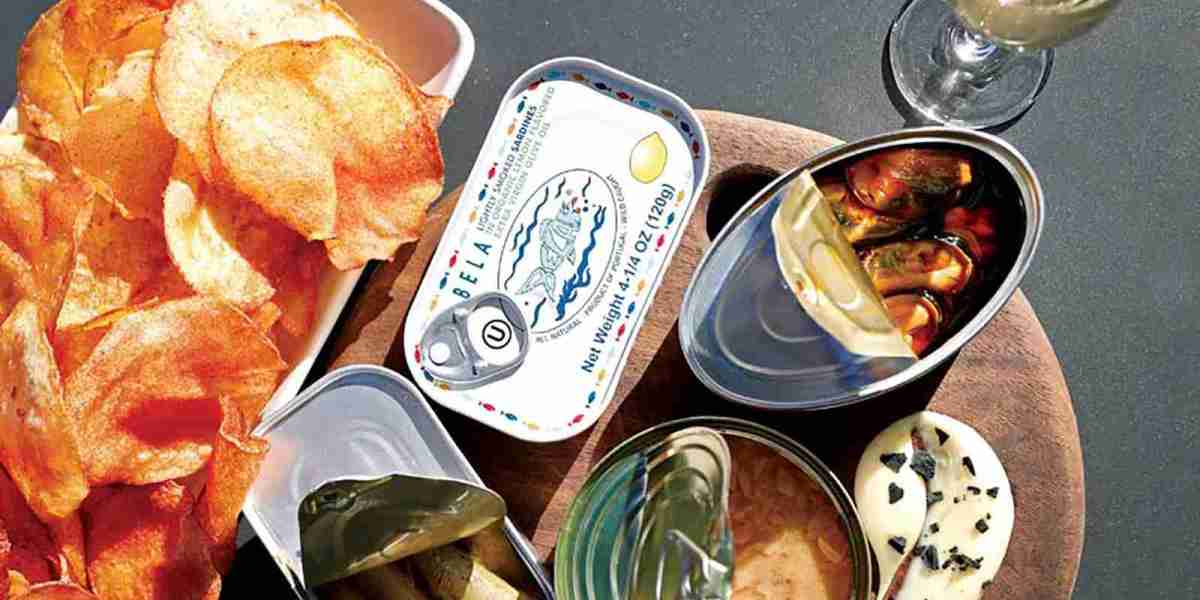The canned seafood market, historically viewed as a stable segment within the global food industry, is now witnessing dynamic shifts influenced by evolving consumer expectations, sustainability pressures, innovation, and global supply chain changes. As canned seafood adapts to modern demand, it is reshaping its role from a simple pantry item to a versatile, nutritious, and even premium food product.
This article explores the core market dynamics influencing the direction and development of the canned seafood industry—focusing on demand patterns, competitive landscape, technological developments, and global economic and environmental conditions.
Demand-Side Dynamics
1. Changing Consumer Lifestyles and Preferences
One of the primary forces shaping the canned seafood market is the evolving lifestyle of global consumers. With the rise of urbanization, dual-income households, and on-the-go living, the demand for ready-to-eat and quick-to-prepare meals has grown significantly. Canned seafood provides a practical solution requiring no refrigeration, offering a long shelf life, and delivering nutritional benefits in a portable format.
Consumers are no longer buying canned seafood solely for emergencies or long-term storage. Instead, they are incorporating it into daily meals as a convenient protein source. Products like canned tuna, sardines, salmon, and mackerel are increasingly seen as core ingredients in salads, sandwiches, rice bowls, and pasta dishes.
2. Health and Nutrition Awareness
Another strong driver of demand is the global trend toward healthier eating. With an increased focus on heart health, brain function, and weight management, consumers are choosing lean proteins and foods high in omega-3 fatty acids—qualities that canned seafood naturally offers. As a result, consumers are seeking products that are low in saturated fats, free from preservatives, and rich in essential vitamins.
Brands that communicate the health benefits of their products such as high protein content, low mercury levels, or heart-friendly fats are seeing greater interest, especially from young professionals, fitness enthusiasts, and older adults managing health conditions.
Supply-Side Dynamics
1. Sourcing and Sustainability Challenges
On the supply side, the availability and sustainability of seafood sources have become central concerns. Overfishing, habitat degradation, and climate change are putting pressure on marine ecosystems, making consistent supply more difficult and more expensive. As a result, companies must navigate fishing quotas, seasonal restrictions, and environmental regulations that affect raw material access.
To remain competitive and compliant, many seafood processors and brands are shifting toward sustainable fishing practices, pursuing certifications such as the Marine Stewardship Council (MSC), and investing in traceability systems. These efforts not only help secure long-term resources but also align with consumer expectations around environmental responsibility.
2. Cost Volatility and Trade Barriers
Rising transportation, packaging, and labor costs are contributing to increasing production expenses. Fuel price fluctuations, port congestion, and tariffs also pose challenges, particularly for companies that rely on global sourcing or export to foreign markets.
In response, some producers are turning to regional supply chains or exploring partnerships in closer markets to minimize risks. Efficient logistics planning and automated processing are being used to reduce overall costs and improve delivery timelines.
Competitive and Innovation Dynamics
1. Product Differentiation and Value-Added Offerings
The canned seafood market is seeing a rise in innovation, as brands seek to differentiate themselves in a crowded field. Traditional offerings such as tuna in water or sardines in oil are now accompanied by gourmet flavors, organic options, and complete meal kits.
Spicy tuna blends, mackerel with Mediterranean herbs, and salmon paired with quinoa or lentils are just a few examples of how brands are adding value to their products. These innovations help brands attract younger demographics and food-conscious shoppers seeking variety and taste.
2. Branding and Digital Transformation
Digital marketing and e-commerce are playing a growing role in the success of canned seafood brands. Online platforms allow for direct-to-consumer models, personalized recommendations, and storytelling around sourcing and sustainability. Consumers can now scan QR codes on packaging to learn about where the fish was caught, how it was processed, and whether it meets ethical standards.
Social media platforms also enable brands to connect with audiences through recipes, nutritional tips, and behind-the-scenes content, making the category more engaging and relevant to tech-savvy shoppers.
Regulatory and Environmental Dynamics
1. Regulatory Compliance
Food safety regulations, especially in the U.S., EU, and other developed markets, are becoming stricter. Canned seafood producers must adhere to labeling laws, traceability requirements, and sustainability certifications to access premium retail channels. This adds both cost and operational complexity, especially for exporters.
2. Climate and Ecosystem Impacts
Climate change is altering ocean temperatures, migration patterns, and fish reproduction cycles. These changes affect the availability of certain species and force supply chains to become more flexible and adaptive. Companies are investing in data-driven forecasting and research collaborations to stay ahead of these challenges.
Conclusion
The dynamics of the canned seafood market are shaped by a complex interplay of consumer trends, environmental factors, global trade, and technological innovation. While challenges such as raw material volatility and sustainability pressures persist, the industry is responding with smarter sourcing, better marketing, and more diverse product offerings.
As canned seafood continues to gain relevance in everyday diets around the world, understanding these market dynamics will be crucial for stakeholders looking to grow, adapt, and lead in this evolving landscape. The future of canned seafood is not just about preservation it’s about progress.



